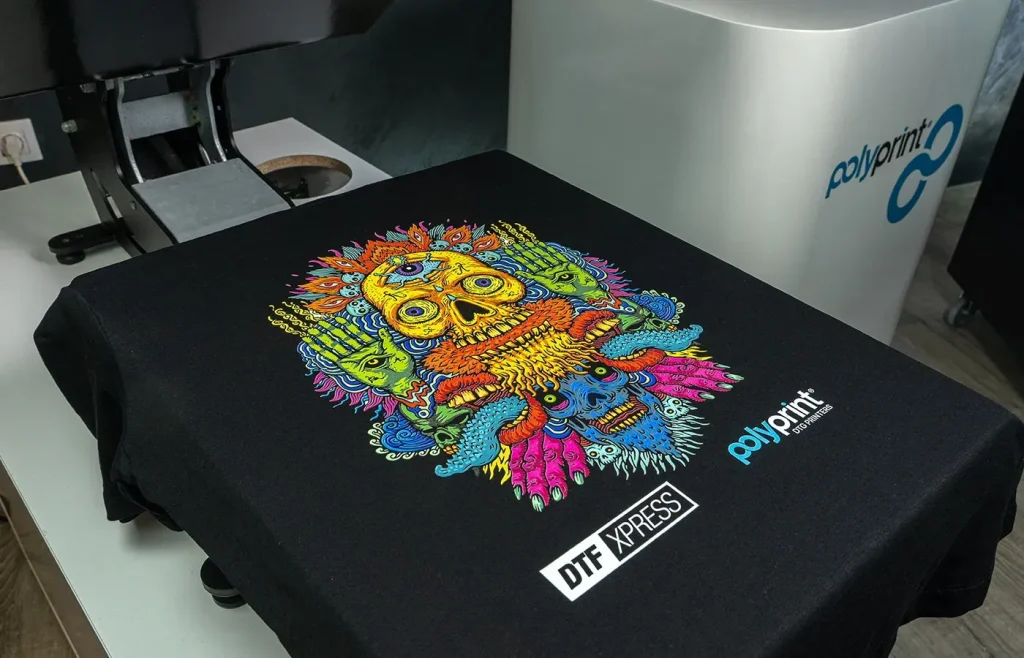DTF printing, or Direct-to-Film printing, is revolutionizing the custom apparel industry, making it easier than ever for businesses to create stunning designs on a variety of fabrics. This innovative printing technology allows for high-quality prints without the labor-intensive processes traditionally associated with screen printing. New developments in DTF printing are paving the way for a more efficient, faster, and cost-effective approach to custom clothing production. As the demand for print-on-demand solutions continues to rise, more entrepreneurs are turning to DTF printing to fulfill their creative visions. In this blog post, we will delve into how DTF printing is changing the landscape of custom apparel and the benefits it offers to both small businesses and larger companies alike.
Also known as Direct-to-Film printing, DTF printing technology is transforming the landscape of personalized clothing creation. This contemporary method streamlines the production of custom clothing, making it accessible to a wider range of businesses—from startups to established brands. By employing advanced printing techniques, DTF printing empowers creators to achieve vibrant designs that adhere beautifully to various textiles. The rise of print-on-demand services, complemented by DTF’s impressive capabilities, has sparked a surge in interest for tailored apparel. This shift in the custom apparel industry not only enhances consumer satisfaction but also stimulates innovation in clothing design.
Understanding DTF Printing Technology
Direct-to-Film (DTF) printing technology has transformed the way custom apparel is produced, offering a unique solution to the limitations of traditional printing methods. Unlike conventional screen printing, which often requires several processes for setup and production, DTF printing uses advanced digital imaging techniques to transfer designs directly onto film. This allows for vibrant colors and detailed images to be applied to a variety of fabric types without significant upfront costs or extensive setup time. The ease of this method is attracting an increasing number of brands that seek flexibility and high-quality output in their custom clothing.
Additionally, DTF printing technology is not just a fleeting trend; it’s revolutionizing the landscape of custom apparel. Utilizing an eco-friendly water-based ink, DTF provides strong adherence to fabrics, resulting in durable prints that withstand washing and wear. This quality is pivotal for businesses looking to provide long-lasting products. As DTF continues to develop, it’s clear that this revolutionary technique stands to redefine expectations for what custom apparel can achieve.
The Advantages of DTF Printing Over Traditional Methods
One of the standout advantages of DTF printing in the custom apparel market is its efficiency. Traditional printing methods often require extensive setup, including screens and inks, along with time-consuming processes to clean and prepare materials. DTF printing eliminates the need for these setups, allowing for quicker turnarounds on orders, which is especially important for businesses operating in the fast-paced print-on-demand environment. This efficiency not only leads to faster service but also decreases production costs, making DTF an attractive option for new brands and experienced companies alike.
Moreover, DTF printing supports a range of materials and fabric types, providing creators with the flexibility to design across various garments. This capability allows businesses to offer a diverse product line, catering to an array of customer preferences. The ability to print on cotton, polyester, and even blended fabrics means that apparel brands can diversify their offerings without investing in multiple printing technologies. The combination of efficiency and versatility positions DTF as an ideal choice for custom clothing production.
User-Friendly Platforms for DTF Printing
As the DTF printing industry grows, so does the emergence of user-friendly platforms such as Snuggle DTF. These platforms are specifically designed to make the process of creating and managing custom apparel as seamless as possible. By providing intuitive interfaces, these web-to-print services streamline the design submissions, printing, and fulfillment processes. This is particularly beneficial for entrepreneurs and small businesses entering the custom apparel market, as it lowers the barrier of entry, allowing them to focus on product and brand development rather than the complexities of production logistics.
The rise of user-friendly platforms demonstrates how technology can empower individuals and small businesses to compete in the custom apparel space. These systems often come equipped with design tools, pre-set templates, and direct communication channels with production teams, making it simpler for users to achieve their desired end product. With the backing of such supportive technologies, the custom apparel market can expect to see an influx of creative designs and innovative ideas, further driving the evolution of DTF printing.
Small Business Accessibility with DTF Printing
The accessibility of DTF printing for small businesses has been greatly enhanced due to innovations in printing technology. Companies like AM.CO.ZA are introducing cost-effective solutions, such as compact DTF printers that specifically target emerging print-on-demand entrepreneurs. These printers are not only affordable but are also designed to produce high-quality prints from the comfort of a home office or small workshop, enabling small businesses to tap into the booming custom apparel market without overwhelming financial investments.
This push for accessibility has democratized the custom apparel industry, allowing more individuals to create their brands and connect with unique audiences. By removing significant financial barriers, aspiring entrepreneurs can quickly start their journeys in fashion and design, leveraging DTF printing to bring their creative visions to life. As more small businesses utilize this technology, we are likely to see a diverse range of products that reflect individual artistic passions and cater to niche markets.
Optimizing Costs with DTF Printing Techniques
An integral aspect of the DTF printing process that sets it apart from traditional methods is the use of gang sheets in production. This technique allows multiple designs to be printed on a single sheet of film, significantly optimizing material usage and reducing overall costs for custom apparel manufacturers. By consolidating several designs, businesses can minimize waste and maximize the efficiency of each print run, enabling them to offer competitive pricing on their products.
Using gang sheets not only reduces costs but also enhances production capabilities, permitting designers to experiment with a wider variety of prints and styles. This flexibility is crucial in today’s fast-moving fashion landscape, where consumer preferences can shift rapidly. By adopting DTF printing techniques, businesses can keep up with customer demand while maintaining high-quality standards without the commensurate increase in expenses.
The Future of Custom Apparel with DTF Printing
As the custom apparel industry continues to evolve, DTF printing stands at the forefront of this transformation. With its advantages in efficiency, quality, and cost-effectiveness, DTF is reshaping how businesses approach the production of personalized clothing. The rise of DTF technology is not merely a phase; it signifies a fundamental shift in manufacturing paradigms that empowers both established brands and entrepreneurial ventures.
The future looks bright for DTF printing as it promises to enhance customer engagement through the ability to offer bespoke products tailored to individual tastes. As this technology matures, we can expect to see even more breakthroughs that will streamline production processes and improve product offerings. Ultimately, DTF printing is poised to define the next generation of custom apparel, driving innovation and creativity within the fashion landscape.
Frequently Asked Questions
What is DTF printing and how does it differ from traditional printing methods?
DTF printing, or Direct-to-Film printing, is a modern technique that allows for high-quality designs to be transferred onto various fabrics. Unlike traditional screen printing, which involves multiple setup steps and is less versatile, DTF printing simplifies the process by printing designs onto a film, which is then transferred to fabric using heat. This method enables faster production times and higher design accuracy, making it ideal for custom apparel.
How can DTF printing benefit small businesses in the custom apparel industry?
DTF printing significantly benefits small businesses by providing an accessible and cost-effective way to produce high-quality custom clothing. With advancements such as the compact A3 DTF printers launched by companies like AM.CO.ZA, small entrepreneurs can easily venture into the print-on-demand market without the need for heavy upfront investments in production equipment. This democratizes access to sophisticated printing technologies, allowing small businesses to compete effectively in the custom apparel landscape.
What are gang sheets in DTF printing, and why are they important?
Gang sheets are a technique used in DTF printing that allows multiple designs to be printed on a single sheet of film. This optimizes material use and reduces costs, making it an efficient choice for custom apparel production. By utilizing gang sheets, designers can offer a wider variety of styles and patterns, enhancing creativity while minimizing waste. These sheets are essential for maximizing productivity and streamlining the print-on-demand process.
Can DTF printing be used for various fabric types?
Yes, DTF printing is highly versatile and can be used on a wide range of fabric types, including cotton, polyester, blends, and even some nylon materials. This flexibility makes DTF printing a superior choice for businesses in the custom apparel sector, as it allows for high-quality prints on different clothing items, ensuring flexibility and aesthetic appeal in design production.
What advancements are driving the rise of DTF printing technology?
The rise of DTF printing technology is driven by several advancements, including enhanced printing techniques, improved production capacity, and the introduction of user-friendly platforms. Companies like Eazydtf have increased their production capabilities with large-format printers, enabling faster fulfillment of custom orders. Additionally, web-to-print solutions like Snuggle DTF streamline the printing process, making it more accessible for newcomers to the custom apparel market.
Is DTF printing suitable for high-volume production?
Absolutely! DTF printing is highly efficient for high-volume production, thanks to its quick setup and ability to produce many prints simultaneously using gang sheets. The technology is built to meet extensive demand without compromising quality, making it an excellent choice for brands looking to scale their custom apparel operations and fulfill large orders promptly.
| Aspect | Details |
|---|---|
| Introduction | DTF printing disrupts the custom apparel industry, offering a new method that combines technology with personalization. |
| Rise of DTF Printing | High-quality designs quickly produced on various fabrics, outperforming traditional screen printing. |
| Expansion of Capacity | Companies like Eazydtf are increasing production capacity, including same-day shipping capabilities. |
| User-Friendly Platforms | Platforms like Snuggle DTF streamline custom apparel printing for businesses and resellers. |
| Accessibility for Small Businesses | Innovative printers like the A3 DTF printer from AM.CO.ZA support entrepreneurs and freelancers. |
| Understanding Techniques | Gang sheets improve efficiency and reduce costs, enabling diverse design offerings. |
Summary
DTF printing is revolutionizing the custom apparel industry with its innovative techniques and accessibility. By leveraging advanced technology, businesses can deliver high-quality, customizable apparel efficiently. The success of companies like Eazydtf, which expanded its production capacity, and platforms like Snuggle DTF, which simplify the printing process, exemplify the growing trend towards DTF printing. As small businesses gain access to affordable high-quality printing solutions, the potential for personalized clothing continues to expand. This technological advancement not only improves production capabilities but also encourages creativity, allowing brands to engage with their customers in new and exciting ways.



